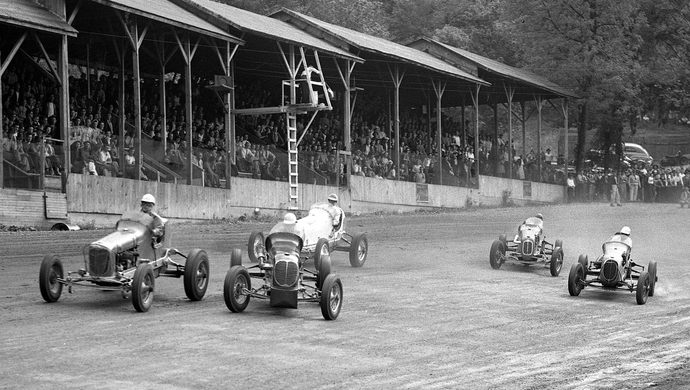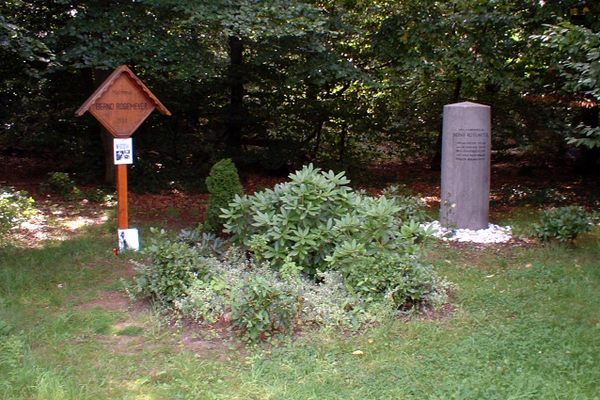AO Edited
Jungle Park Speedway
The overgrown remains of one of the premier auto-racing speedways in the Midwest—and also one of the most deadly.
Mention Indiana and auto racing and the first thing that comes to mind is probably the Indy 500. Indeed, the Indianapolis Motor Speedway and its annual 500-mile race are famous the world over. And while that two-and-a-half-mile oval may be considered one of the premier racing venues in the sport, there’s another track in the Hoosier state that has an equally famous—or infamous—history.
About 50 miles west of Indianapolis, nestled among the trees of the Wabash River valley, is what remains of Jungle Park Speedway. Built in 1926 by Indiana entrepreneur Earl Padgett, the track hosted some of the best sprint-car drivers of the day. Three-time Indianapolis 500 winners Wilbur Shaw and Mauri Rose took their turns on the half-mile oval. In total, eight drivers who competed at Jungle Park went on to win at Indy. That is, eight who survived competing at the notoriously dangerous speedway. Even though it drew America’s most skilled racers, Jungle Park was deadly.
In only its second year of operation, Jungle Park Speedway had its first fatal accident when a track manager was struck and killed while trying to repair a divot in the dirt track during the race. The following year, a driver and a spectator were killed. By 1931, three more drivers would lose their lives.
Track safety was not a high priority in the first half of the 20th century. Early on, Jungle Park had little or no fencing between the track and the spectator grandstands, and there was no outer wall around the high-banked oval. Drivers who lost control often found themselves in the trees that circled the track or in the waters of Sugar Creek, which bordered the backstretch.
Despite the dangers, Jungle Park continued to host races for more than 25 years, with a pause during World War II. Over the years, some improvements were made: a gravel and oil mix was added to the dirt to give the track a more asphalt-like surface, and protective fencing was added to the grandstand. Still, that wasn’t enough to minimize the carnage. More accidents and dwindling crowds led to Jungle Park shutting down in 1955. It opened briefly for one midget car race in 1960, but sadly, that ended in tragedy, as well. A 37-year-old woman from Terre Haute was killed when a race car hit a pothole in the track, lost control, and flew through the fence, landing on top of her.
Little is left of the original complex. Only one of the five grandstands remains and the track surface has been retaken by grass and trees (although a narrow strip of that oil and gravel mix still can be seen along the main straightaway). A testament to the significance of Jungle Park Speedway, a state historical marker stands at the entrance, just off Highway 41 in western Indiana.
Know Before You Go
There is limited parking at the entrance just off U.S. Highway 41 and signs are posted reading "No Trespassing" and "Beware of Dog." A metal barrier prohibits vehicles from entering the property, but doors on the wooden gate are typically wide open.




















Follow us on Twitter to get the latest on the world's hidden wonders.
Like us on Facebook to get the latest on the world's hidden wonders.
Follow us on Twitter Like us on Facebook